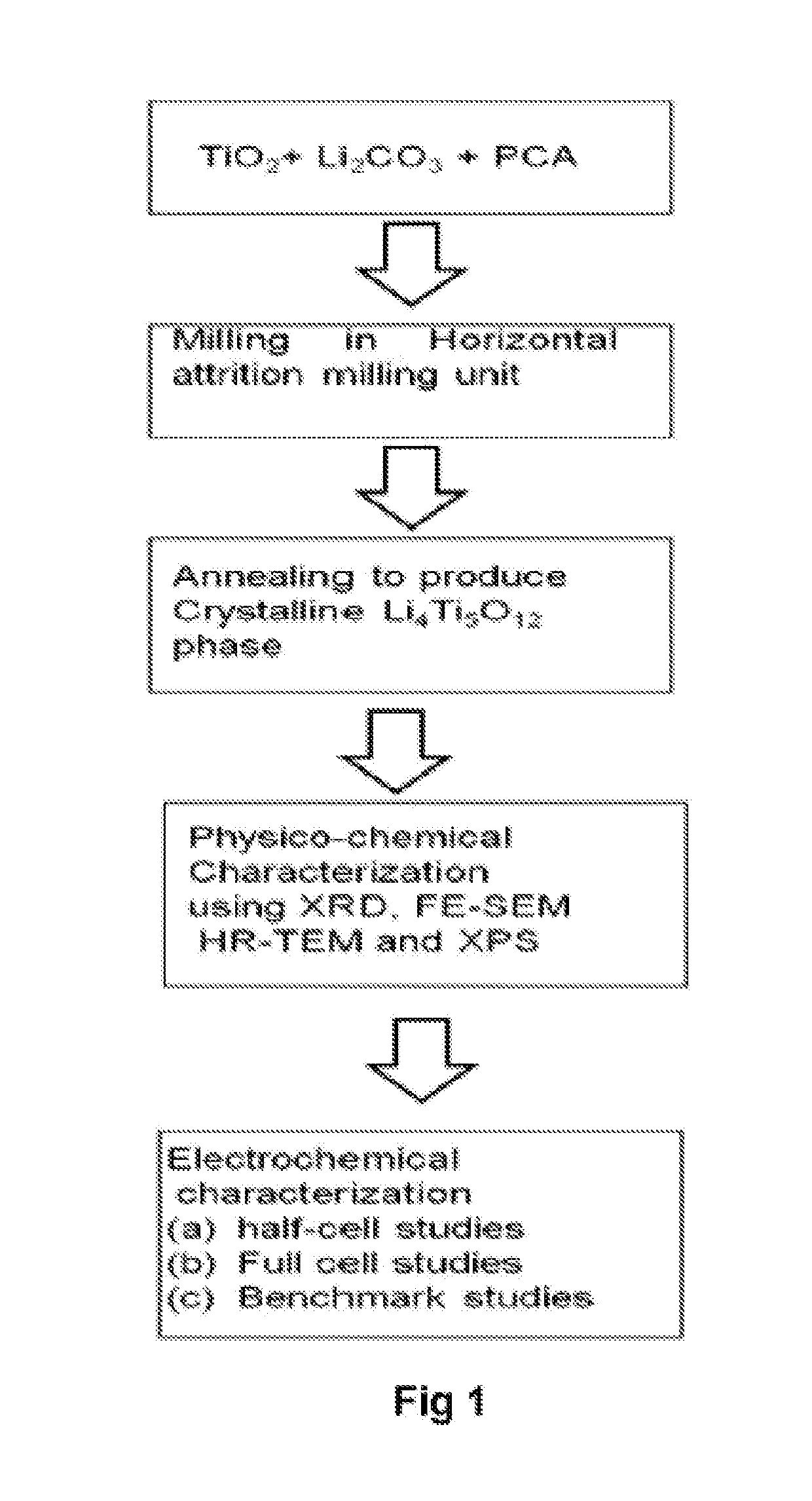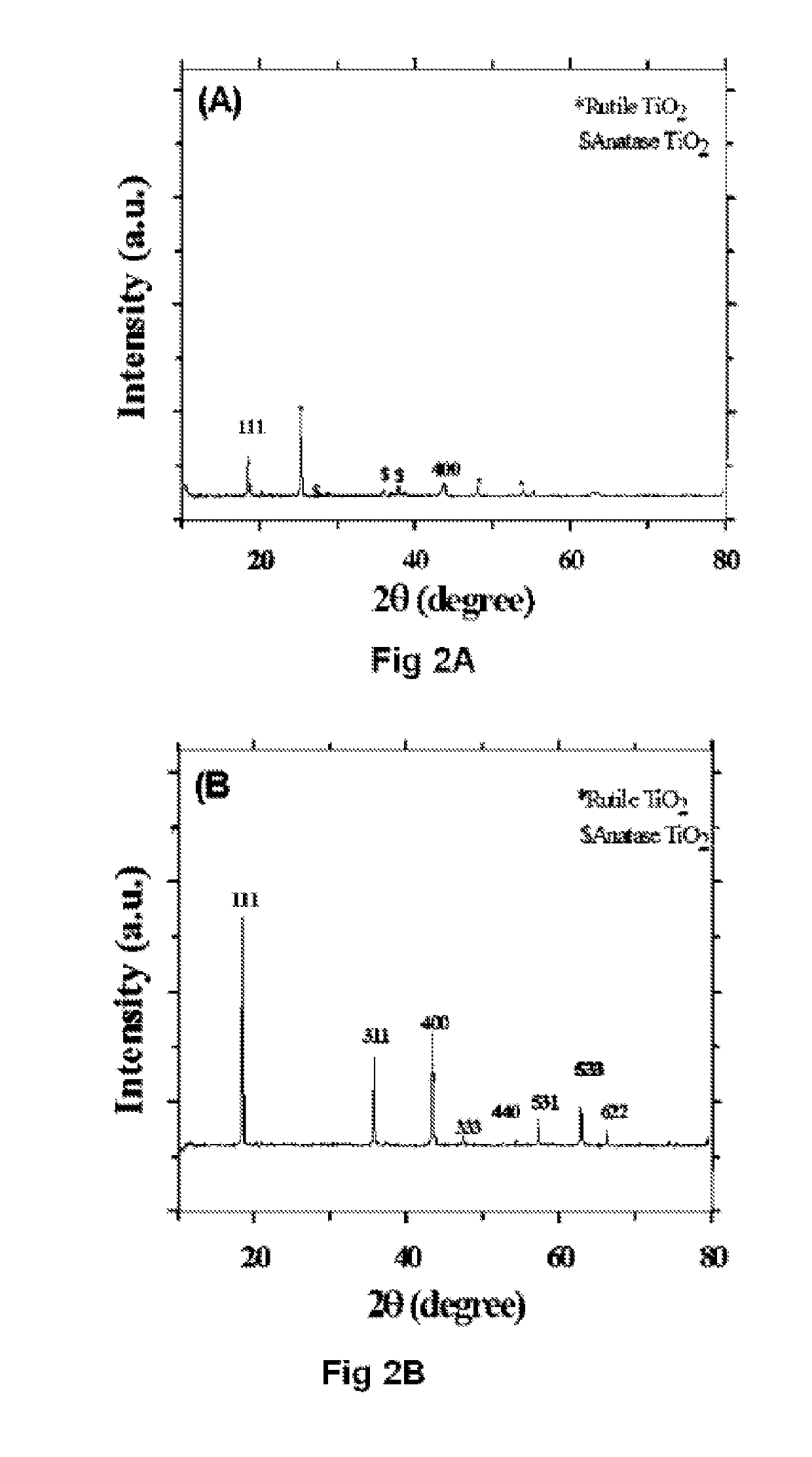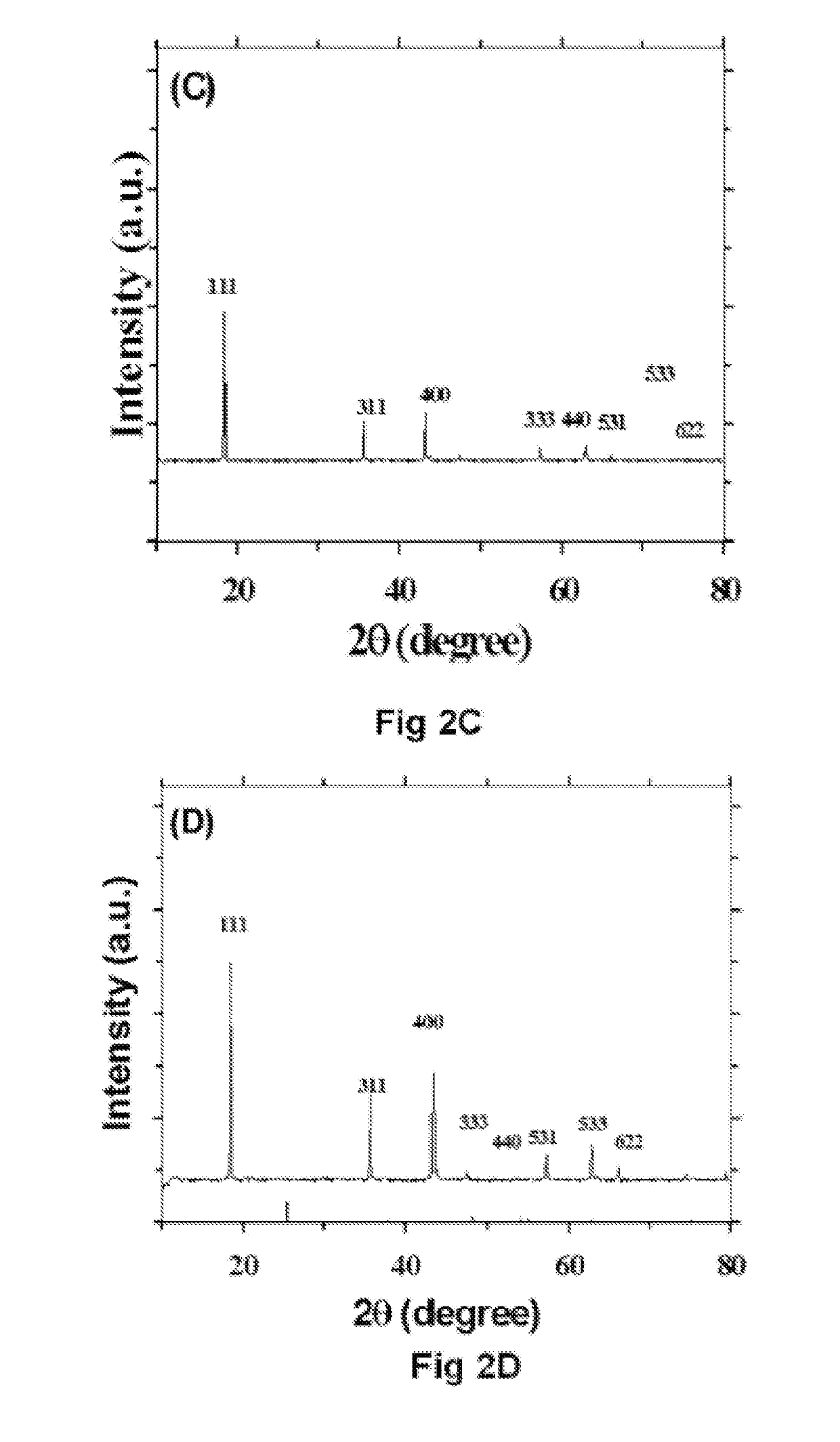A method of producing high performance lithium titanate anode material for lithium ion battery applications
a lithium titanate and anode material technology, applied in the direction of alkali titanates, cell components, electrochemical generators, etc., can solve the problems of affecting the electrochemical performance, prone to sei, difficult to master, etc., and achieve excellent electrochemical performance, high specific capacity, and high rate capability
- Summary
- Abstract
- Description
- Claims
- Application Information
AI Technical Summary
Benefits of technology
Problems solved by technology
Method used
Image
Examples
example 1
Effect of Different Crystalline Phases of TiO2
[0069]Li4Ti5O12 was synthesised using horizontal attrition milling process. The invention produces LTO using four different phases of TiO2. It uses pure anatase phase, rutile phase, Mixed phase 1 (60% Anatase and 40% Rutile) and Mixed phase two (80% Anatase and 20% Rutile) accordingly the respective LTO phases are labelled as A-LTO, R-LTO, M1-LTO and M2-LTO. The technique makes use of milling the raw TiO2 powders with Li2CO3 in a stochiometric ratio of 5:4 with 5 wt % of extra Lithium carbonate to compensate the lithium loss during heat treatment. For horizontal attrition milling powder ratio was maintained to be 10:1-12:1 with stainless steel as milling medium and stainless steel balls of 0.5 mm diameter. Process control agent (PCA) was used to prevent stacking of the powders to the walls of the vials. Here stearic acid was used as PCA. It was used to 2-5 wt % as it may contribute to the carbon content as well. The powders were initial...
example 2
Influence of Annealing Atmosphere and Time
[0070]The product of example 1 is calcined to produce highly crystalline single phase LTO. Annealing was carried out under argon, nitrogen and air atmosphere. The powders were pelletized using a 30-35 mm die under 0.5-1 ton pressure using a hydraulic press. When in pellet form it is expected to exert uniform heat distribution by improved inter-particle contact. In inert gas atmosphere, purging was carried out using the respective gas to ensure oxygen is completely expelled. Heat treatment was carried out at 700-900° C. with a heating rate of 10° C. / min. In the presence of inert atmosphere, carbon from PCA creates a reductive atmosphere to produce oxygen vacancies. When these oxygen-vacancies are created, the charge compensation is done by titanium ion in oxidation state of four. To find the influence of annealing time, annealing was carried out for different time lapses like 2-12 h. All the anatase TiO2 will be converted to rutile above 650°...
example 3
Electrochemical Performance in Half Cell Configuration
[0071]The electrochemical properties are the final target of the invented technique. The property of anode developed was tested in half-cell configuration using lithium metal as counter electrode. The crystalline anode material prepared was used for electrode fabrication to test the efficiency for electrochemical properties. For electrode fabrication, the electrode active material synthesized using horizontal attrition milling is taken along with conductive carbon and binder in a ratio of 80:10:10. They are grinded together and dissolved in NMP solvent to form homogenous slurry, which can be used for electrode fabrication. This slurry was coated over a current collector (in the present case copper foil acts as current collector) using doctor blade in a thickness of 15 micrometer. The resulting electrode is then dried at 60° C. for 12 h to evaporate the moisture and ensure the proper adherence of active material to the current col...
PUM
 Login to View More
Login to View More Abstract
Description
Claims
Application Information
 Login to View More
Login to View More - R&D
- Intellectual Property
- Life Sciences
- Materials
- Tech Scout
- Unparalleled Data Quality
- Higher Quality Content
- 60% Fewer Hallucinations
Browse by: Latest US Patents, China's latest patents, Technical Efficacy Thesaurus, Application Domain, Technology Topic, Popular Technical Reports.
© 2025 PatSnap. All rights reserved.Legal|Privacy policy|Modern Slavery Act Transparency Statement|Sitemap|About US| Contact US: help@patsnap.com



